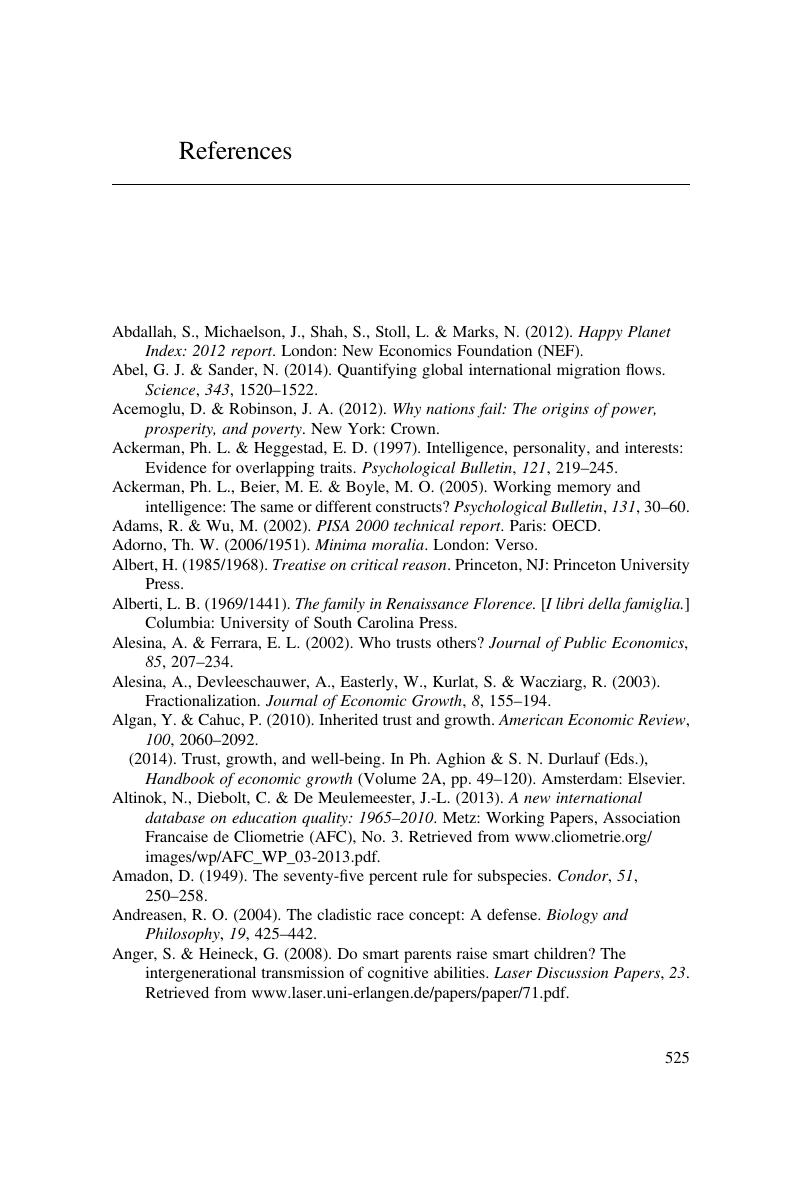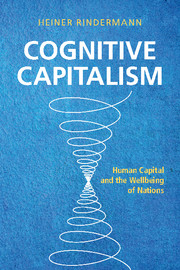Book contents
- Cognitive Capitalism
- Cognitive Capitalism
- Copyright page
- Contents
- Figures
- Tables
- Preface
- 1 Large Wealth Differences across Time and Nations
- 2 The Wellbeing of Nations
- 3 Human Capital, Cognitive Ability and Intelligence
- 4 International Ability Differences and Their Development
- 5 Why Some Are Richer, Freer and More Democratic
- 6 History, Culture and the Burgher-Civic World
- 7 Why Cognitive Factors Are Important: A Theory of Cognitive Capitalism
- 8 The Impact of Cognitive-Intellectual Classes
- 9 Methodological Research Problems and Solutions
- 10 Causes of National and Historical Differences in Cognitive Ability – and Reciprocal Effects
- 11 Global Models for Education, Cognitive Capital, Production, Wealth and Wellbeing
- 12 Challenges of Future Development and First Predictions
- 13 Models for Cognitive and Wealth Development in the Twenty-First Century
- 14 Summary, Comparisons and Suggestions
- References
- Index
- References
References
Published online by Cambridge University Press: 01 February 2018
- Cognitive Capitalism
- Cognitive Capitalism
- Copyright page
- Contents
- Figures
- Tables
- Preface
- 1 Large Wealth Differences across Time and Nations
- 2 The Wellbeing of Nations
- 3 Human Capital, Cognitive Ability and Intelligence
- 4 International Ability Differences and Their Development
- 5 Why Some Are Richer, Freer and More Democratic
- 6 History, Culture and the Burgher-Civic World
- 7 Why Cognitive Factors Are Important: A Theory of Cognitive Capitalism
- 8 The Impact of Cognitive-Intellectual Classes
- 9 Methodological Research Problems and Solutions
- 10 Causes of National and Historical Differences in Cognitive Ability – and Reciprocal Effects
- 11 Global Models for Education, Cognitive Capital, Production, Wealth and Wellbeing
- 12 Challenges of Future Development and First Predictions
- 13 Models for Cognitive and Wealth Development in the Twenty-First Century
- 14 Summary, Comparisons and Suggestions
- References
- Index
- References
Summary

- Type
- Chapter
- Information
- Cognitive CapitalismHuman Capital and the Wellbeing of Nations, pp. 525 - 570Publisher: Cambridge University PressPrint publication year: 2018

